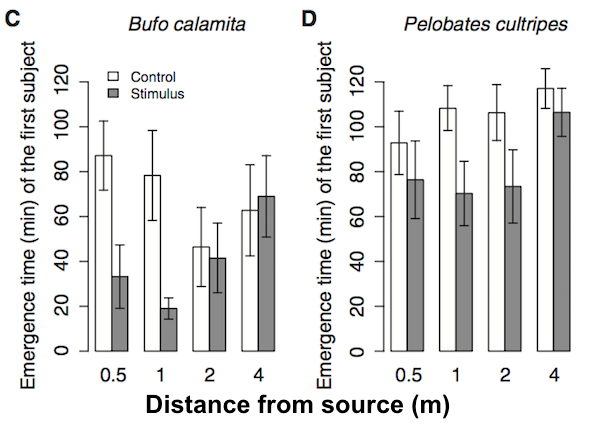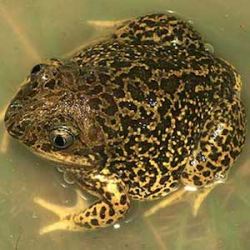As amphibians, toads prefer a wet environment. Those that live in arid regions hide during dry spells underground, where the soil is moist, and they emerge from their shelter when the rain returns. But given that the subterranean soil they inhabit is already damp, how do the toads know when it's raining?
An international team of researchers figured the toads can sense low-frequency vibrations. To test their hypothesis, the scientists visited the sand dunes on the southern coast of Spain. They captured toads of two different species and built enclosures for them on the dunes. Then, using pre-recorded rain vibrations combined with a sound transducer buried 10 centimeters underground, they were able to play back the vibrations and monitor the emergence of the toads.
As shown below, toads of both species that were exposed to the vibration stimulus emerged much faster than toads that did not receive the stimulus. Overall, toads in the experimental group emerged about 26 minutes sooner.

Additionally, a greater proportion of toads exposed to the stimulus emerged than unexposed toads, though these results were not statistically significant. The authors surmise that this was due to the timing of their study, since these particular toads are quite active at night.
Still, the researchers' results fit quite nicely with the fact that toads have special inner-ear organs fine-tuned to sensing low-frequency vibrations. In addition to helping them hear the rain, perhaps such organs may also give toads a deep appreciation for the musical genius that is "Another One Bites the Dust."
Source: Rafael Márquez, Juan F. Beltrán, Diego Llusia, Mario Penna, and Peter M. Narins. "Synthetic rainfall vibrations evoke toad emergence." Current Biology 26 (24): pR1270–R1271. Published: 19-December-2016. DOI: http://dx.doi.org/10.1016/j.cub.2016.11.005

